Changing the parking position
The other setting you can change is the parking position the adapter goes to when AF is disabled.
- F36 – Park adapter at minimal extension (infinity)
- F40 – Park adapter to maximal extension (closest focus)
- F45 – Park adapter at current extension
When you set the adapter to the minimal extension it focuses way beyond infinity with my Voigtlander 1.7/35 which I have to set to 5m to achieve actual infinity focus.
When you set the adapter to maximal extension it works like a 4.5 mm extension tube. This is really handy especially with rangefinder lenses because they usually have a very long minimal focus distance. The wider the lens, the stronger the effect will be. Check out Bastian’s Voigtlander Close-Focus adapter review for a more detailed discussion of this effect.
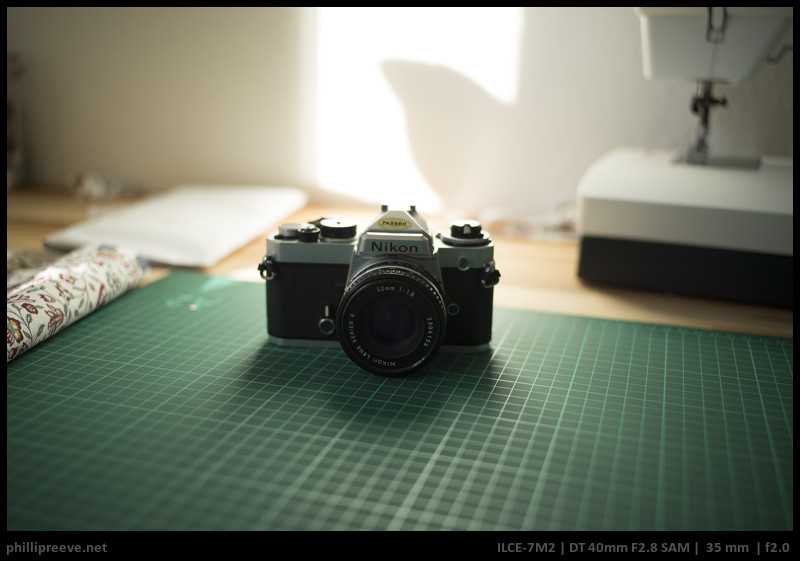
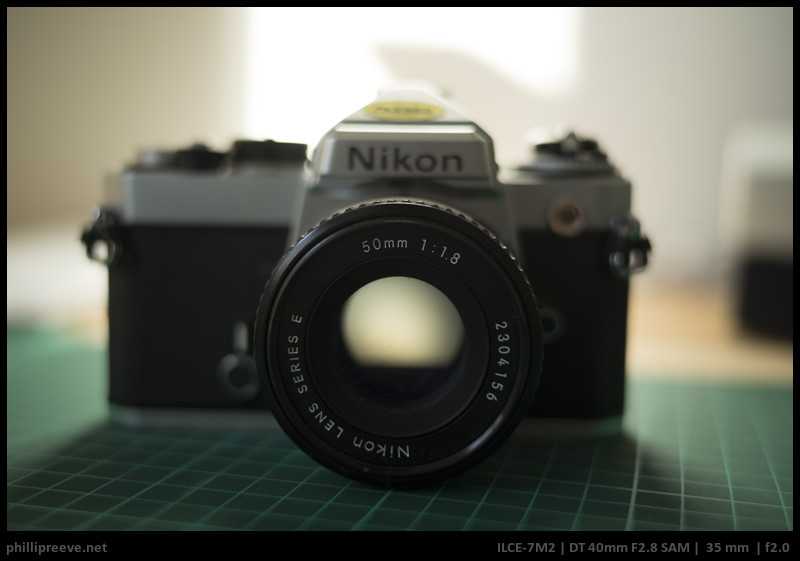
My Voigtlander 1.7/35 at its normal short focusing distance of 0.5m and with full extension.
I found that the close focusing feature is very nice to have indeed and it allowed me to take some pictures I otherwise couldn’t have taken but I also found it quite annoying to activate it. To activate it you have to turn the aperture dial 26 clicks, take a picture and turn it back 26 clicks. Working in A-mode I also had to point the camera at the brightest spot I could find and turn the exposure down because otherwise I would end up with an exposure lasting several seconds which slowed the process down even more. Maybe Techart could add a switch for the configuration in a next generation of this adapter which would improve the operation a lot.
 Voigtlander 1.7/35 VM at the close focusing distance
Voigtlander 1.7/35 VM at the close focusing distance
Conclusion
good
|
average
|
not good
|
To be honest with you, I have never been interested in the first generation Techart Pro LM-EA7: too clunky, too bulky, too noisy and after some time we found out it also has longevity issues.
When I was approached by Techart to have a look at this LM-EA9 and I saw the sleeker design and heard they are using several small ultrasonic motors instead of one noisy micro motor and the improved mechanical design I was immediately interested though.
And indeed, it turned out to be a really useful accessory I could actually see myself using regularly. I am even considering a thin filter mod for one of my Sony cameras to be able to use my favorite M-mount lenses with AF but without any optical compromises on a Sony camera.
The lack of firmware updates in the last 4 1/2 years for the predecessor and its compatibility issues with newer cameras are still a bitter pill to swallow and are also making me question to invest a big sum of money in this successor though.
 Sony A7III | Leica 90mm 2.0 pre-Asph | f/2.0 | LM-EA9
Sony A7III | Leica 90mm 2.0 pre-Asph | f/2.0 | LM-EA9
Still, it is not like there is anything else like this on the market and this LM-EA9 definitely is a huge step up from the LM-EA7 and at the end of the day simply a really cool accessory. I have been telling you about all its quirks and limitations – and you should be aware of them – but in many scenarios it works actually quite well and as long as you are not shooting action pictures you may not even notice most of these limitations.
So if you were happy with the AF performance of the LM-EA7 you will definitely be happy with this LM-EA9, as the mechanics and usability have been greatly improved. If you want your M-mount lenses to focus by themselves, this is the way.
The Techart LM-EA9 sells for $399 and you can order it on the offical homepage or B&H (affiliate links) it shall be noted that only those bought through the official homepage and B&H are valid for product support from Techart.
PS: the LM-EA9 also opens up the possibility to give the camera to someone not that keen on manual focus to take an in-focus picture of you with a manual focus lens:
 Sony A7III | LM-EA9 | TTArtisan 35mm 2.0 | f/2.0
Sony A7III | LM-EA9 | TTArtisan 35mm 2.0 | f/2.0
AF performance
General remarks
I mainly used the LM-EA9 with a Sony A7III, I didn’t notice a big difference in performance when using it on an A7rII though.

With most lenses the AF only works properly in the central part of the image whereaus outside of it it doesn’t work at all. Many people think this has to do with how sharp the lens is, but I don’t think so. Out of 11 M-mount lenses I tried the only ones that worked well also in the corners are the Leica 90mm 2.0 pre Asph and the Syoptic/Mr. Ding 50mm 1.1. My guess is this has to do with the lateral CA correction (this might have influence on the on sensor phase detect pixels) and these two lenses are overcorrected for lateral CA (which is rare to encounter).
I uploaded a few short videos where I tested how off center focusing for 4 different lenses works here. In the videos I used AF-C Flexible Spot, but the behaviour is the same when using AF-S as well as AF-C Wide and this is true when having eye AF activated as well.
The good news is that I rarely place people or their eyes outside of the rule of thirds intersections and here it still works well, so the limitations are not as big as they may seem at first sight.
 Sony A7III | Syoptic 50mm 1.1 | f/1.1 | LM-EA9
Sony A7III | Syoptic 50mm 1.1 | f/1.1 | LM-EA9
Stills
For still photography the AF works decently. With non moving subjects it hits the target most of the time, but the hit rate is still not as good as it is with a native lens.
I am happy to report that eye AF (tested with humans as well as animals) is supported and usually finds its target, this is of course very helpful.
 Sony A7III | LMEA9 | TTArtisan 35mm 2.0 | f/2.0
Sony A7III | LMEA9 | TTArtisan 35mm 2.0 | f/2.0
For slow moving subjects it also works well enough in AF-C mode – I am not sure I would have been able to easily take this picture without the LM-EA9 – but I definitely recommend to take not only one shot, but rather a few more to make sure that one will be in good focus.
I have been shooting a musical with this adapter and was generally surprised by the AF hit rate:
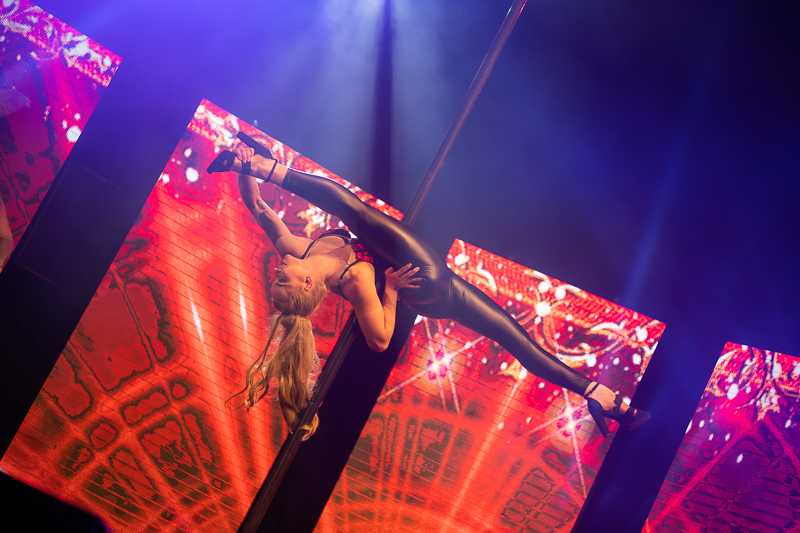 Sony A7III | Leica 90mm 2.0 pre-Asph | f/2.0 | LM-EA9
Sony A7III | Leica 90mm 2.0 pre-Asph | f/2.0 | LM-EA9
If you are thinking of tracking fast moving subjects – e.g. dogs or people doing sports – I am pretty sure you will end up being disappointed though.
I didn’t encounter a noticeable drop in AF speed or hit rate in low light when using the A7III.
 Sony A7III | Syoptic 50mm 1.1 | f/1.1 | LM-EA9
Sony A7III | Syoptic 50mm 1.1 | f/1.1 | LM-EA9
Build Quality/Handling
The adapter generally feels solid and the design is way more sophisticated than that of the LM-EA7. The connection to the camera is very tight, my M-mount lenses show a tiny amount of radial play on this sample of the adapter though.
I pushed the adapter a bit by using a lens which weighs 510g and it still worked fine, but it does make less sound and of course also focuses faster when using smaller/lighter lenses.
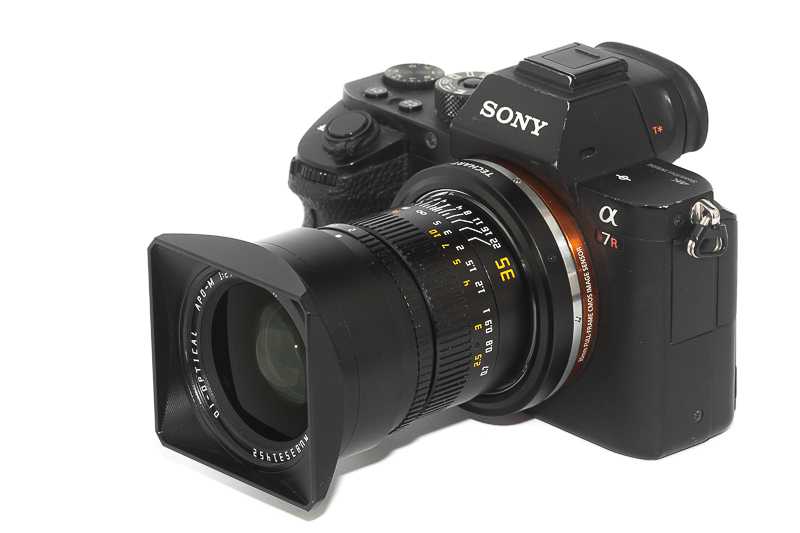 TTArtisan 35mm 2.0 Apo attached via Techart LM-EA9 to Sony A7rII
TTArtisan 35mm 2.0 Apo attached via Techart LM-EA9 to Sony A7rII
Of course I can’t tell you about sample variation with just one adapter and I don’t have any long term experience with it.
The LM-EA9’s design is definitely sleeker than that of its predecessor, but when extended you can still see rather big gaps between the bayonet and the outer casing. I am not sure I would be willing to use this adapter in the rain or dusty/sandy environments because of this.
 M->E adapters: Metabones – TTArtisan 6-bit – Techart LMEA9
M->E adapters: Metabones – TTArtisan 6-bit – Techart LMEA9
Interestingly – despite the noticeably sleeker appearance – the Techart LM-EA9 weighs exactly as much as its predecessor: 133g. The lightest M-mount adapters weigh only around 50g.
I didn’t really like the big bulge at the bottom of the LM-EA7 as it didn’t work well with my L-brackets and was always in the way, this one only has a slightly bigger diameter than a normal adapter which makes using it way more fun
Things you should be aware of
Assign a custom button to AF/MF Ctrl Toggle
In camera (e.g. in the Fn Menu) you can only switch between AF-S and AF-C. If you want to focus your lens manually (and have the option to use Focus Magnify) you need to assign “AF/MF Ctrl Toggle” to a custom button.
This also allows you to use the adapter as a 4.5 mm extension tube: point the camera at something close and use AF so the adapter extends, then set the camera to MF to keep it extended and manually focus the lens from there.
Some lenses with infinity lock collide with the adapter
According to a reader (have a look at ) some lenses with infinity lock collide with the adapter and therefore cannot be used.
Using non-M-mount lenses
The LM-EA9 has a Leica M-mount but you aren’t limited to M-mount lenses. You can buy adapters for many other lens mounts to M-mount and turn them into AF lenses this way. Not any adapter to M-mount will fit though.
Also keep in mind the weight limit of 500g. The LM-EA7 had a weight limit of 700g but over time many of these adapter’s mechanics deteoriated, leading to tilt and ultimately degrading the image quality of the lens you are using with it. Therefore I think there are definitely reasons for the lower weight limit here and I would advice to stick to it.
Negative effect on Image Quality
The adapter can have a negative effect on the image quality of lenses with a floating elements design. If you use a unit focus lens (unit focus means all the elements move the same on focusing) image quality won’t be affected at all.
Lately there have been more rangefinder lenses that use a floating elements design, e.g.: Leica 50mm 1.4 Asph, Leica 35mm 1.4 FLE, Zeiss ZM 35mm 1.4, Laowa 9mm 5.6, Voigtländer VM 21mm 1.4 or 7Artisans 35mm 1.4 IF – to only name a few of the more popular ones. Older and longer M-mount lenses are usually unit focus.
If you think about using old SLR lenses via an additional adapter many of the wider and most of the autofocus lenses also feature a floating elements design as well.
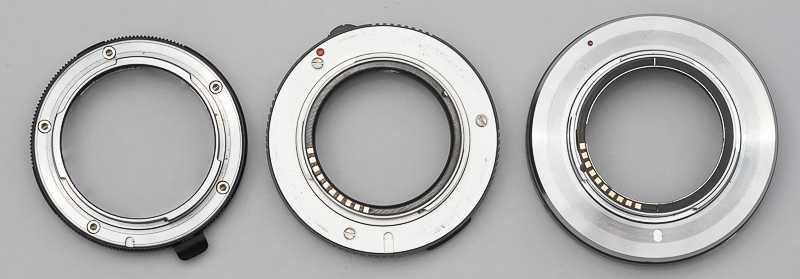 M->E adapters: Metabones – TTArtisan 6-bit – Techart LMEA9
M->E adapters: Metabones – TTArtisan 6-bit – Techart LMEA9
As you can see from the picture above – because of the electronic contacts – the opening is a bit smaller compared to a “dumb” adapter like the Metabones.
So as was already the case with the TTArtisan 6-bit Leica-M to Sony-E adapter there is added vignetting when using the MS-Optics 135mm 2.4 lens.
All my other M-mount lenses work fine in this regard, but I am pretty sure there are more (fast and/or long) lenses where this can happen.
Firmware updates and product support
The predecessor LM-EA7 received its last firmware update in January 2018 – so roughly 2 years after release – to support A7rIII and A9. From what I have read the adapter still doesn’t work on the Generation 4 cameras (A7rIV etc.) at all and it doesn’t look like there will ever be a new firmware update to fix this.
I am not sure for how many years we should expect product support in the form of firmware updates, but if I had bought the LM-EA7 for ~400€ and I couldn’t use it anymore on newer cameras I wouldn’t be happy at all and I would definitely think twice before investing a big sum in another product of that company where this might happen again.
Reseting the adapter
Some people had issues with the adapter not working properly anymore, especially after firmware update to 1.6.0. Techart sent me this troubleshooting guide which often fixes the issue:
- Download and unzip the firmware updater from attachment for Windows or for Mac here.
- Connect the adapter with its rear cap to the computer.
- Open the firmware updater, choose LM-EA9 v1.5 then click “update”.
- The firmware will automatically be updated and loaded into the adapter. A loading icon will be shown. The whole process takes less than 5 minutes to complete. Once the process is done, unplug the cable.
- Install the adapter with your lens on your camera.
- Turn on the camera and set the aperture on the camera body to f/90.
- Manually focus on a subject in order to allow shutter release.
- Release the shutter/take a picture.
- Set the aperture back to f/2.0 and see if the adapter motor has any response now. Sometimes it will take long for the function to be activated again.
- Repeat step 6-9 if the motor is still not responding.
- Once the motor resume working, connect the adapter to computer again
- Open the firmware updater, choose LM-EA9 v1.6 then click “update”.
If this doesn’t work get in contact with the Techart support.
Personally I have been using this adapter for months and did not encounter any of these issues, but I am only using it with the older Sony A7rII and A7III cameras and I am still running firmware 1.4.0.
What lenses the LM-EA9 works best with?
What hasn’t changed compared to the predecessor: you won’t have a very wide focus range with longer lenses. The longer the focal length the more extension is needed to focus close and the adapter is limited to an extension of 4.5 mm.
In the following table I wrote down the lenses’ (measured) minimum focus distance that is reachable with the LM-EA9 when the lens is set to infinity:
| Focal Length | MFD on LM-EA9 |
|---|---|
| 21mm | 0.20 m |
| 35mm | 0.41 m |
| 50mm | 0.75 m |
| 75mm | 1.37 m |
| 90mm | 2.13 m |
| 135mm | 9.00 m |
You can see that the range with longer lenses is quite limited whereas the benefit is that with wide angle lenses you can often focus closer than you normally could.
The following e-function gives a good approximation to calcuate the MFD for lenses of different focal lengths:
MFD = 0,1244 x e^(0,032*Focal Length )
You can still use the focus ring to get close to where you subject is and let the AF do the rest, but this is quite bothersome when the distance between you and your subject(s) changes a lot. The longest focal length I tried was 135mm and here the operation was already rather bothersome.
 Sony A7III | Syoptic 50mm 1.1 | f/1.1 | LM-EA9
Sony A7III | Syoptic 50mm 1.1 | f/1.1 | LM-EA9
So ultimatey, I think with lenses not longer than 50mm there are little restrictions and the whole operation can be described as smooth. With lenses from 50-90mm there are some restrictions – prefocusing the lens might be needed – but it is still usable. Beyond that I didn’t find it really useful to be honest.
Introduction
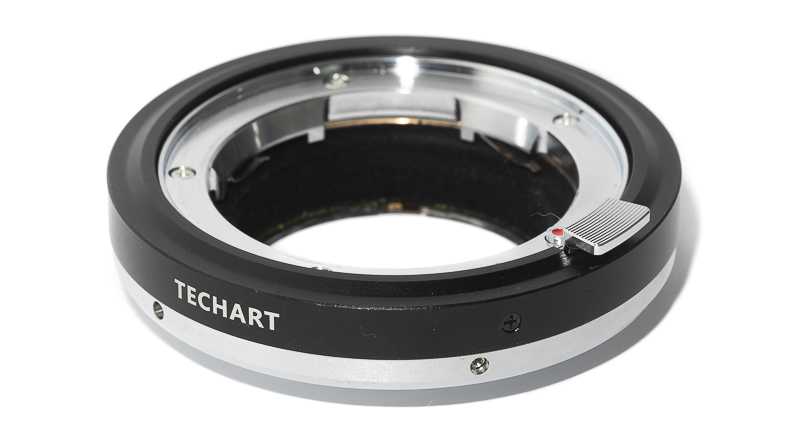 Techart LM-EA9
Techart LM-EA9
When the original Techart LM-EA7 adapter had been released it was a revelation: turning your manual focus lenses into autofocus lenses, how great is that? But there were also quirks to overcome, some reliability issues and incompatibilities with later camera models.
Now 5 years later there is a fully reworked, improved version. Does it solve all the issues we had with its predecessor? Let’s have a closer look at this new Techart LM-EA9.
 Sony A7III | Leica 90mm 2.0 pre-Asph | f/2.0 | LM-EA9
Sony A7III | Leica 90mm 2.0 pre-Asph | f/2.0 | LM-EA9
Update March 2023: More detailed information added how to reset the adapter if it is not working anymore, further sample images added
Contents
Feeling the Focus
The first thing we did when we received our review unit was check to ensure the firmware was up to date. You can check and update firmware using an iPhone (or Android) app connected via Bluetooth to the adapter.
The TAP adapter is an unimposing ring a bit more than ¾-inch thick with a little bulge on the bottom to house the motor. It fit easily on our Sony A7R II. The TAP adapter itself weighs less than 5oz but can mount lenses as heavy as 1 lbs 9 oz. To test the adapter, we mounted our trusty 90mm f/2 Leica Summicron.
Having used many manual adapters before, we deciphered the TAP instructions pretty quickly. You have to set the camera body to f/2 (regardless of actual lens speed) and the exposure mode to Aperture priority. There are limits as to how well this works but unlike many other lens adapters it’s possible to program this one to make the camera recognize different lenses, then optimize exposure and even utilize image stabilization.
But the magic happens the first time you point at your subject and press the shutter button. A slight growl emits from the TAP adapter and that manual focus lens you’ve had for years automatically moves back and forth until the camera displays focus. Not all of Sony’s AF modes can be utilized when the adapter is on (like eye detection), but we were happy with our results shooting in both AF-S and AF-C.
With the adapter in place, you won’t have blazing-fast autofocusing, so it’s not ideal for people who need to shoot sports or other fast-moving subjects. But it’s perfectly acceptable for general photography, provided you’re not in dim light and/or using a small aperture as both make it harder for the camera sensor to sense focus.
Another nice touch with this adapter is that it gives you enhanced close-up capabilities. For normal AF operation the lens focus ring is set to infinity and the motor drives the lens out up to 4.5mm to position it at the correct focus point. If you switch to manual and combine the adapter’s extension with the extension produced by the normal focus ring you’ll get notably closer (obviously more effective on shorter lenses).
Something to remember: the adapter’s motor is powered by the camera battery so it does require recharging the camera battery more often.
Perhaps our favorite feature beyond the fact that now the entire collections of Leica M mount lenses can be empowered with autofocus is that you’re not just limited to these lenses. Techart and others offer an additional 19 adapter rings that will fit the M mount front and add AF functionality to more than a dozen other brands of lenses. Just for fun we attached the M42 adapter and pulled a few Pentax screw mount lenses out of the archives. Sharp AF and 42-megapixel resolution were things we never experienced before with our 17mm fish-eye-Takumar and other Pentax optics.
Changing focal length
The first function is the focal length the adapter communicates to the camera so that it can calibrate it’s stabilizer.
Here are the f-stops and their corresponding focal length.
- F11 – Set focal length to 15mm
- F13 – Set focal length to 18mm
- F14 – Set focal length to 21mm
- F16 – Set focal length to 24mm
- F18 – Set focal length to 25mm
- F20 – Set focal length to 28mm
- F22 – Set focal length to 35mm
- F25 – Set focal length to 50mm
- F29 – Set focal length to 90mm
- F32 – Set focal length to 135mm
I found this function quite handy when I used just my Voigtlander 1.7/35 and a few other lenses with conventional adapters because while I had to change the focal length manually for my other lenses I didn’t have to with the Voigtlander. But when I also had the Voigtlander 1.8/75 with me it would have been faster to change the focal length in the camera which I couldn’t because my SteadyShot-setting was set to Auto. So I had to turn the aperture dial 23 clicks, take a picture and turn it back 23 clicks which is a bit annoying.
The situation eased a bit when I downloaded the configuration app and reconfigured F11 to 35mm and F13 to 75mm. You can also configure an F-stop in the app but this has no effect and the camera will write the set focal length, f/2 and DT 40mm F2.8 to the exif file. It would be great if a future firmware update would fix that.
Settings
As was already the case with the LM-EA7 you can change some basic settings. You do that by changing the aperture in the camera and pressing the shutter button.
Changing focal length
The first function is setting the focal length the adapter communicates to the camera. This focal length will be used for the IBIS to work properly and will also be written in the Exif data so you can track which lenses you have used. No matter the focal length setting, the adapter will always be recognized as a DT 40mm 2.8 SAM lens in the exif data – same was true for the predecessor.
But how to change the focal length setting? Set the aperture in camera according to the corresponding aperture value from the list below, take a picture and then dial back to f/2.0. Dialing back to f/2.0 is crucial, if you don’t do this your pictures will be overexposed.
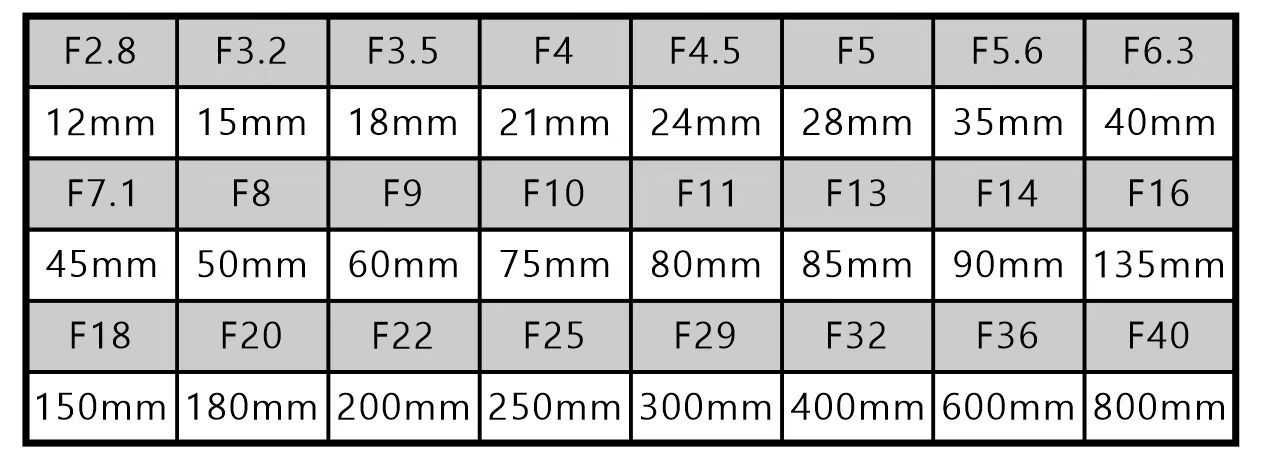
For the LM-EA7 Techart provided a configuration app for Android that allowed for more distinct settings. Currently it is undecided if there will be such an app for the LM-EA9 as well.
Changing AF mode
The LM-EA9 offers two AF modes which are activated by taking a picture with the camera set to f/51 or f/57.
- Normal Focus Mode f/51
The standard focus mode which should also be the fastest, not recommended for lenses that are faster than f/1.4 though - Slow Focus Mode f/57
Recommended when experiencing focus issues with lenses faster than f/1.4 in normal focus mode
To be honest with you: I did not notice any meaningful differences between these two focus modes.
Changing the parking position
How does it work? Whatever the adapter’s current position is when pressing the shutter button with the camera set to f/45 will be the new parking position. This already worked with the LM-EA7.
What can this be useful for? When you let the adapter focus as close as possible it will work as a 4.5 mm extension tube so you can focus closer than you usually could, especially with wide angle lenses.
To activate it you have to turn the aperture dial 27 clicks, take a picture and turn it back another 27 clicks. An issue carried over from the predecessor.
I only see very few use cases for this, often it is easier to just use either something close or far away to have the adapter retracted or extended and then switch to MF for it not to move around anymore.Update: this only works up to firmware version 1.4.0 which is why I never updated to 1.5.0
Updating the firmware
The LM-EA9’s firmware can be updated which is a nice feature, as theoretically new features could be added or simply the stability and compatibility be improved.
I read that for the LM-EA7 the update process wasn’t very smooth and I am happy to report it works really well with the LM-EA9 now.
The LM-EA9 ships with a rear cap/dock that can be connected to a computer or Mac via an USB-Micro-C cable. After downloading the appropriate software from the Techart homepage you can choose the desired firmware from a list, no need to find the correct update file before. Even a downgrade to a previous version is currently possible.




























